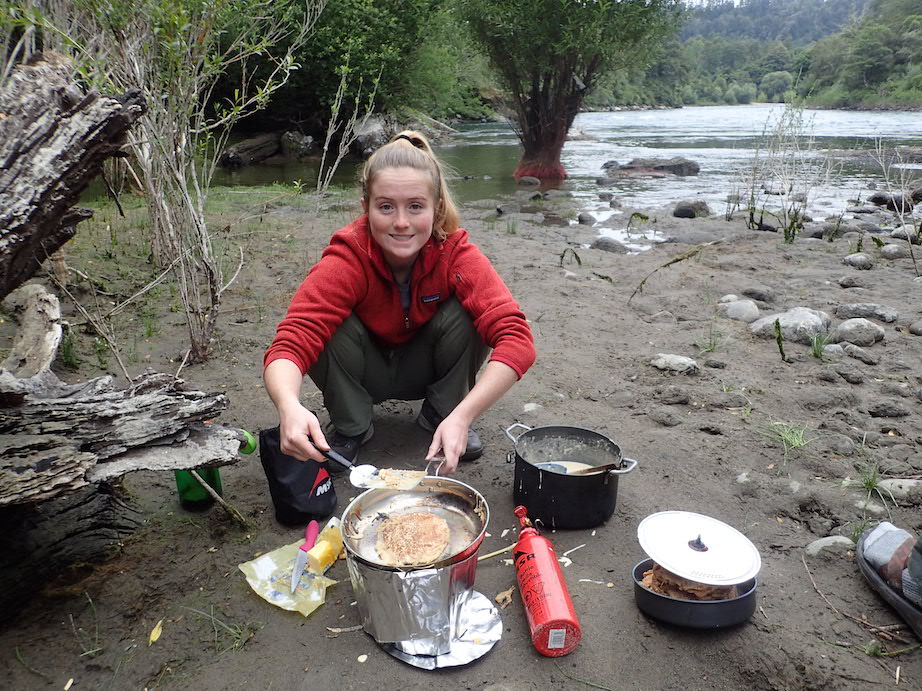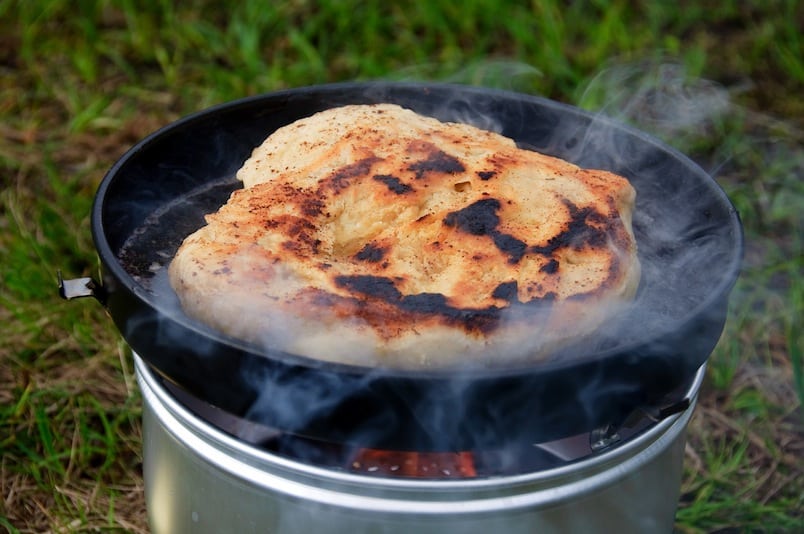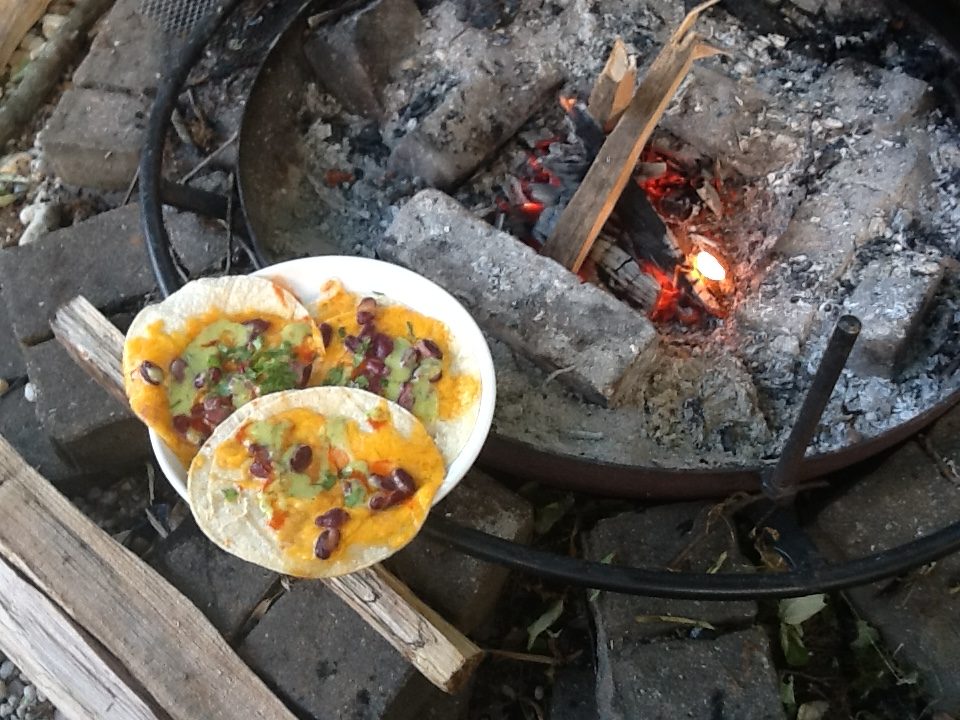Backcountry Gourmet — Favorite Recipes from Our Field Staff
Wilderness CookingHere at The National Center for Outdoor & Adventure Education (NCOAE) we like to take backcountry cooking to the next level, and that means teaching students how to prepare gourmet meals while on backcountry expeditions.
Whether it’s starting your day with a hearty breakfast, making a quick lunch wrap on the run, or preparing a veggie-filled dinner at the end of a long day hike, climb, or paddle, this post includes three backcountry recipes that might inspire you for the meals you’ll prepare and enjoy on your next adventure.
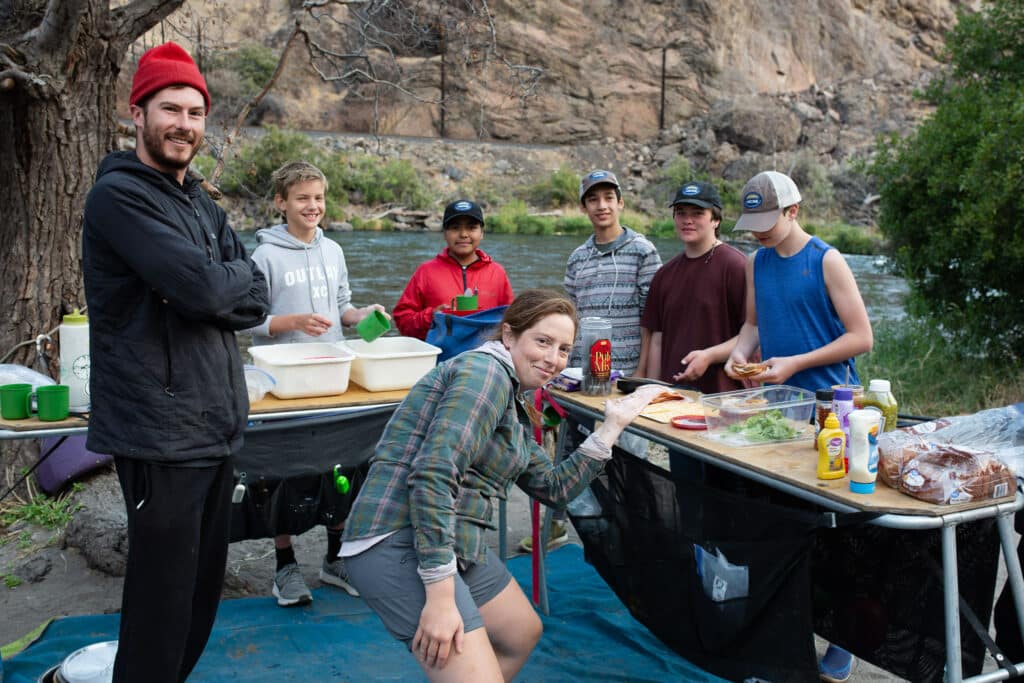
Cooking in the backcountry doesn’t mean you have to sacrifice flavor or nutrition. In fact, with a little planning and creativity you can enjoy delicious, nutritious, and satisfying meals that fuel your human-powered outdoor activities. Our field instructors have crafted these recipes to be both easy to prepare and incredibly tasty, ensuring that your time in the backcountry is complemented by great food.
Heard, Chef! When you’re in the wild, having a variety of meals that are quick and simple to prepare can make a big difference in your attitude and overall experience. The three recipes below are designed to maximize flavor while minimizing cooking time and cleanup, allowing you to spend more time enjoying the great outdoors.
At NCOAE, we believe that good food is an essential part — in fact, a highlight — of any outdoor adventure. Not only does it provide the energy needed for strenuous activities, but it also brings people together, creating memorable experiences around the campfire. So, whether you’re a seasoned outdoor chef or a beginner, give these recipes a try.
Note: The following recipes are meant for groups of 12. Do the math and adjust for the size of the group for whom you’re cooking.
Backcountry Recipe 1 – Breakfast
Breakfast Burritos with Hash Browns
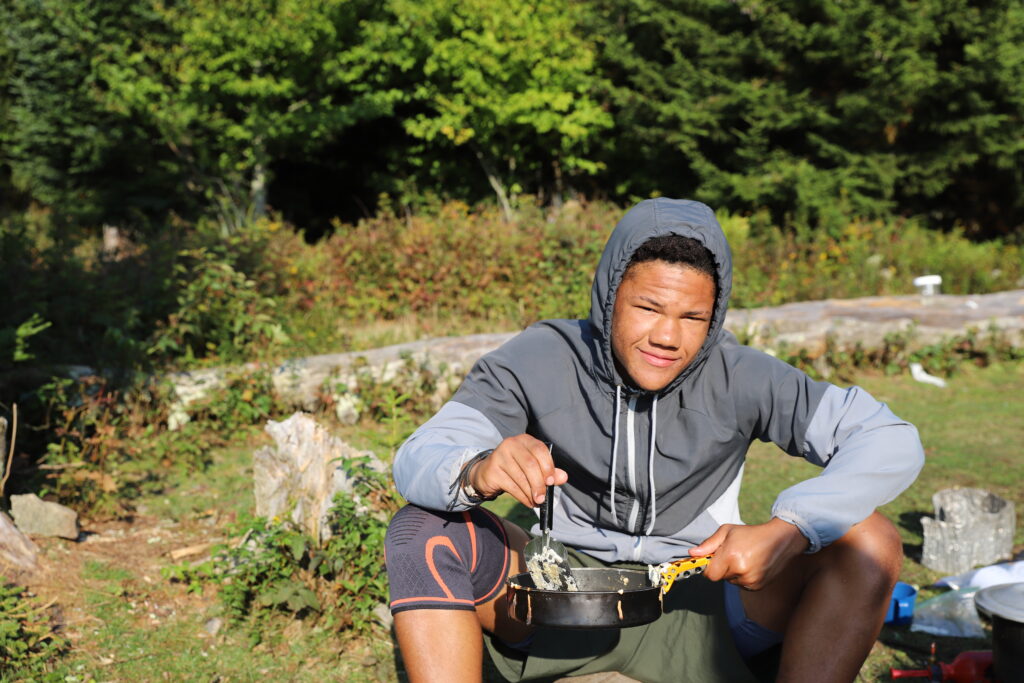
Ingredients
- 3 Cups Scrambled Egg powder or 24 Eggs
- 4 Cups Hashbrowns (dried)
- Onion, diced
- Bell Pepper, diced
- 12 Tortillas
- 1 Cup Salsa
- 2 Cups Cheese
- Salt & Pepper, to taste
- Bacon Bits, optional
- Ketchup packets, optional
- Butter / oil
Directions | Instructions | Serves 12
- Mix eggs.
- Add spices to taste.
- Heat butter or oil in a skillet, then scramble the eggs.
- Meanwhile, cover dried hashbrowns in a small pot with boiled water.
- Let sit 5 minutes.
- Once rehydrated, season with spices to taste.
- Fry in a skillet with oil.
- Once cooked, remove from skillet.
- Sauté until softened.
- Set out tortillas, eggs, hashbrowns, veggies, cheese, salsa, and any optional ingredients buffet style.
- Build your own breakfast burrito and enjoy!
Backcountry Recipe 2 – Lunch
Buffalo Chicken Wrap
Ingredients
- 12 Tortillas
- 4 pouches Chicken
- 12 pkgs Ranch Dressing or Blue Cheese
- 12 oz Buffalo Sauce
- 1 ½ Cups Carrots, sliced
- 6 Cups Lettuce
- 1 ½ Cups Shredded Cheese
- Paprika, to taste
- Garlic Powder, to taste
- Salt, to taste
- Hot Sauce, to taste
- 6 Tablespoons Olive oil
- 2 Avocados, sliced — optional
- Celery sticks — optional
Directions | Instructions | Serves 12
- Mix together olive oil, buffalo sauce, paprika, garlic powder and salt in a Ziploc bag.
- Add chicken and allow to sit for 5- 10 minutes.
- Meanwhile, place tortillas on a dish and spread with a thin layer of blue cheese or ranch dressing.
- Layer with lettuce, carrots, avocado (optional), and cheese.
- Next, arrange chicken down the center of each tortilla.
- Wrap like a burrito.
- Serve with a side of hot sauce, extra dressing, or celery sticks if desired.
Backcountry Recipe 3 – Dinner
Riverside Stir- Fry
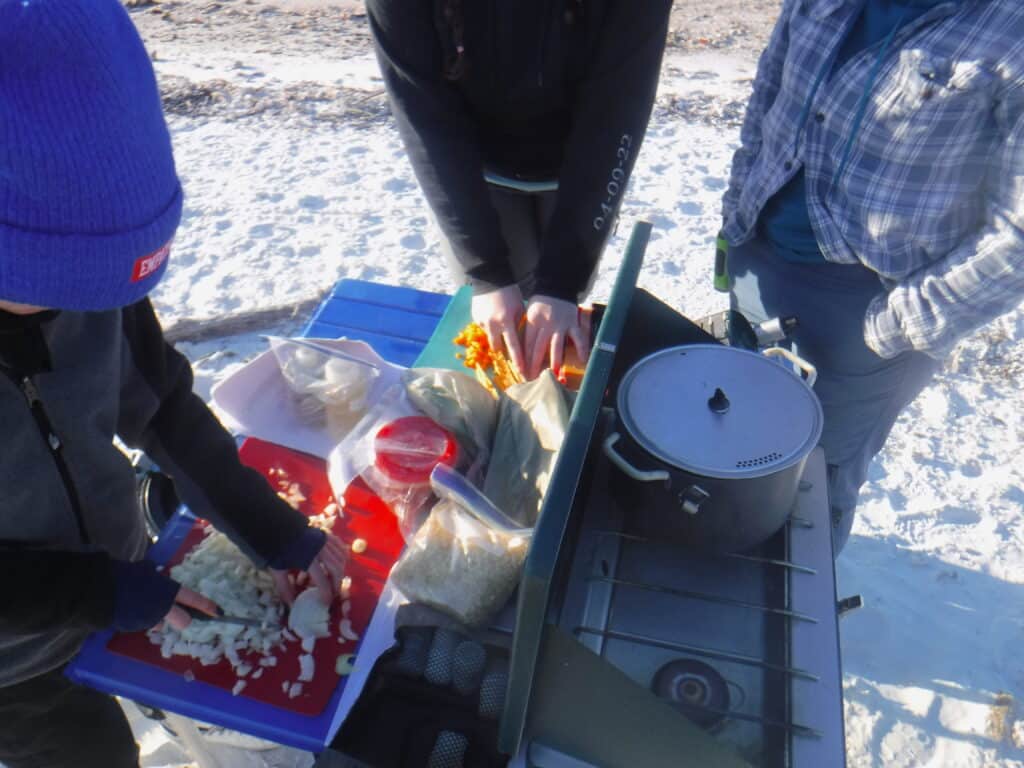
Ingredients
- 3 Cups Rice
- 2-3 Onions
- 4 Bell Peppers
- 4 Cups Squash / Zucchini
- 4 Cups broccoli
- 2 Cups carrots
- 1 bag Snap Peas
- 1 can Baby Corn
- 1 Cabbage
- 1 Can Water Chestnuts, optional
- 2 Cups Mushrooms, optional
- 6 Garlic Cloves, minced (or garlic powder)
- Ginger, minced (or ginger powder), to taste
- 6 Teaspoons brown sugar
- 1 Cup Soy sauce
- 1 pkg Tofu, shelf stable
- 4 pouches chicken
- Chili sauce, to taste
- Oil
Directions | Instructions | Serves 12
- Cook rice.
- Meanwhile slice onion, pepper, broccoli, carrots, cabbage, squash/zucchini, garlic, mushrooms, etc.
- Sauté with olive oil about 5 mins.
- Add soy sauce, brown sugar and other spices.
- Continue sautéing until slightly tender.
- Separately sauté tofu and/or chicken. Stir well, cover 5 minutes.
= = = = = = = = =
About the Author: Elizabeth Shirley, WFR, is the Director of Outdoor Programming & Education at The National Center for Outdoor & Adventure Education (NCOAE).
Proper Water Treatment Needs to be a Priority in the Backcountry
Wilderness CookingWhile it’s true that some water sources you encounter in the outdoors are safe, know that drinking from even the most pristine looking stream or river can make you sick. There might be unseen runoff from industry, agriculture, livestock, and wildlife, and these can contribute bacteria, chemicals, and other contaminants to the very water you believe is safe to drink.
Which means you should always treat all outdoor water sources before consuming. If that recommendation is confusing or sounds somewhat limiting, consider the following: To guarantee your continued health while recreating in the outdoors, whenever possible, you should bring your own water from a known source. That includes tap water from home or bottled water from the store. The only other option is to practice water treatment techniques.
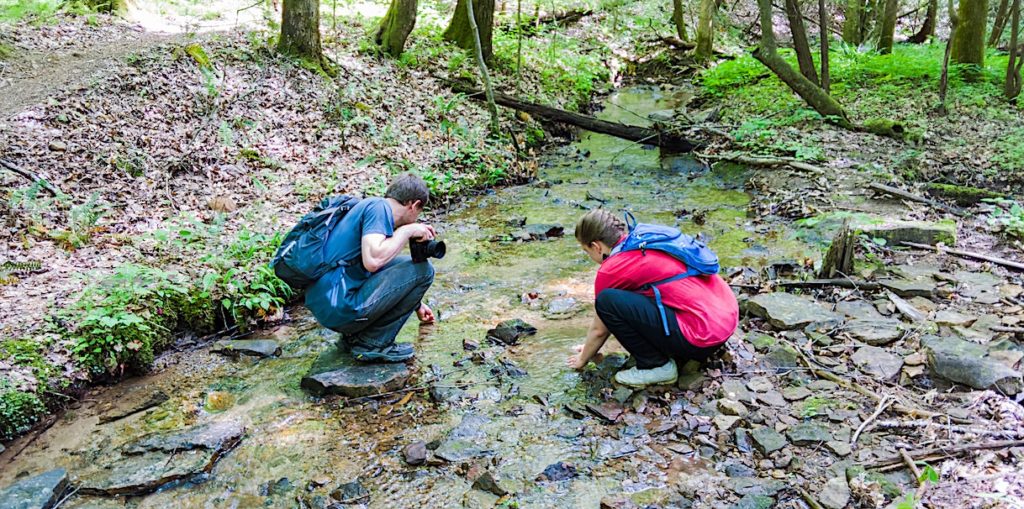
Here are some common ways to treat water:
BOILING
This method is one of the simplest and least expensive ways to treat water in the backcountry.
- Simply fill your water pot from your water source, place your pot on your stove, then bring to a full rolling boil.
- Once your water has come to a full rolling boil, allow to continue boiling for another minute to eliminate bacteria, protozoa, and some viruses.
- And if you find yourself at a higher altitude (above 6,500 feet), add another three minutes to that boiling time.
- However, boiling is not the best method when you know your water is contaminated with runoff from agriculture or chemicals.
(more…)Warning: Boiling water burns cooking fuel. You might consider saving cooking fuel for cooking and perhaps build a wood fire — assuming your backcountry permit or local ordinances allow for it — to boil water for drinking.
Making Dehydrated Delicious: 4 Quick Backcountry Recipes
Wilderness CookingHere at The National Center for Outdoor & Adventure Education, we’re known for bringing gourmet meals to the wilderness. And since we carry all our food either on our backs or in our boats, we try to pack ingredients that begin in their lightweight dehydrated form. That makes for an easier time on the trail, and it leaves room in our packs for fresh vegetables and fruit to mix things up.
Meals in the backcountry offer a variety of options — from meat and grains to fresh baked bread and pizza made from scratch. Our students learn to cook meals on the trail, often developing cooking skills that they can bring home to the front country.
Here are some our staff members’ and students’ favorites from the trail that you might want to prep and cook on your next outdoor adventure:
Blueberry Pancakes
Who doesn’t like pancakes first thing in the morning? This trail-proven recipe is sure to get your day started on the right footing. Blueberries, after all, are more than just sweet and nutritious — they’re also known to play a role in reducing muscle damage, especially after strenuous exercise.
(more…)Trail Nutrition: Planning and Prepping Backcountry Meals
Wilderness CookingPreparing backcountry meals and focusing on trail nutrition is important when planning meals for your next outdoor adventure. Whether you’re organizing a day hike, overnight camping trip, or multi-day backcountry adventure, maintaining good nutrition while exploring the outdoors is key to have a good time on your next adventure.
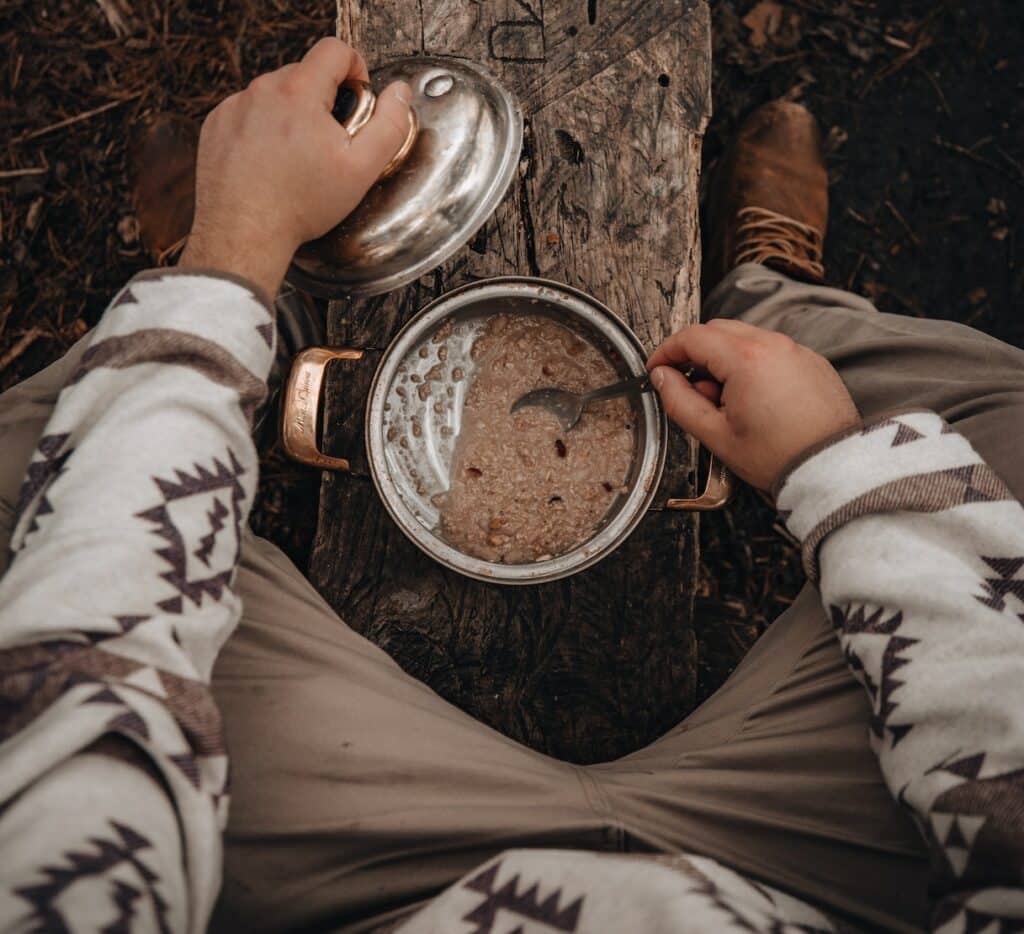
First on the list? Be sure to start your day off right with a good breakfast. That’s the meal that will set the tone for your day and jumpstart your metabolism. Throughout the day, that morning meal will help you maintain good blood sugar levels and energy.
Planning a Backcountry Menu
Here’s the deal when it comes to planning a backcountry menu: You need to find a balance between getting enough food (calories) to sustain yourself and stay well fed and warm, while not overdoing it and ending up hauling an unnecessary amount of weight on your back.
Depending on the weather, mileage, pack weight, activity, incline of the trail, and other factors, you’ll want to consider your group’s necessary daily calorie intake. Common sense tells us that if you’re planning to be more active than usual, you’ll burn through more calories.
For a multi-day backpacking trip, a good average is 3,500 calories a day per person. A good baseline is a limit of 1.5 pounds to 2.5 pounds of food per person, based on how strenuous you expect your trip to be.
(more…)Gourmet Cooking on the Trail: Here’s What You’ll Need to Pack
Wilderness CookingSome veteran backpackers claim the only time a heated can of Dinty Moore stew tastes delicious is when eaten outdoors, but today there are many quick and easy ways to pull together a gourmet meal from what you can grab out of your backpack. The trick is knowing what to pack!
Truth is, we here at The National Center for Outdoor & Adventure Education (NCOAE) are among the go-to experts when it comes to wilderness cooking for large and small groups that enjoy the backcountry. That’s because our veteran field instructors and leaders have had years to develop ways to transform mundane mountainside meals into Five Star (OK, maybe Four Star) dining experiences.
The secret? It’s all in what you pack in your gear. And with some advance preparation and careful planning, you can spice up your backcountry cooking menus to taste just as delicious on your weekend trail trek as they do for us on, say, an Outdoor Educator Course in Patagonia.
Real estate inside your backpack is always at a premium, but here are a few items that — come lunch or dinnertime — will make you glad you squirreled them away next to your clean socks and underwear: (more…)
From Belly to Brain, Cognitive Shifts in the Backcountry
Wilderness CookingDuring our latest Instructor Candidate (IC) course, I had the opportunity to witness one of the most beautiful shifts in group dynamics I’ve seen in a long, long time.
Our instructor candidates had just finished two days of challenging climbs — made all the more difficult by torrential rains, equipment challenges and late — very, very late — dinners. Empty bellies, low energy levels and mercurial weather makes for some pretty unhappy people.
On the third day we set off on even steeper climbs and larger elevation gains. By lunchtime, the entire group was getting the “hangries.” After the noontime meal, one of the instructor candidates (Jessica) said we needed to get a head start on dinner. Now.
And before we know it, she began leading us all through a dough-making lesson. As we began kneading the dough, everyone began chatting about a range of topics, with a little laughter and horseplay thrown in. What we were not talking about was smelly wet clothes, tired legs and aching bodies.
As we set off for our second half of the day, each of us had a ziplocked bag of rising dough tucked into our shirts, giving us the appearance of a large group of big-bellied backcountry enthusiasts.
By the time we found a suitable campsite, we were exhausted, the water was further away than we thought and a lot of work faced us before we could eat. You could slice the tension in the air with a pizza cutter — which was ironic because (more…)
Wilderness Problem Solving Often Requires Response to a Question
Wilderness CookingIt’s the end of a long day trekking through the backcountry. Tents are being set up, water is being collected and brought to the campsite and everyone is tired and hungry.
A conversation ensues:
Student: The stove won’t light.
Instructor: Okay.
Student: Should we fix it?
Instructor: Do you need it to cook dinner?
Student: Yes….we should fix it.
At this point the expedition, the cooks begin to “field strip” the stove. They remove all the parts, grease the gaskets, clean off the dirt and grime, then check the pump and screens and look for impurities in the fuel. After cleaning up all the parts, they reassemble the stove, pump it, light it up, lean down and listen closely.
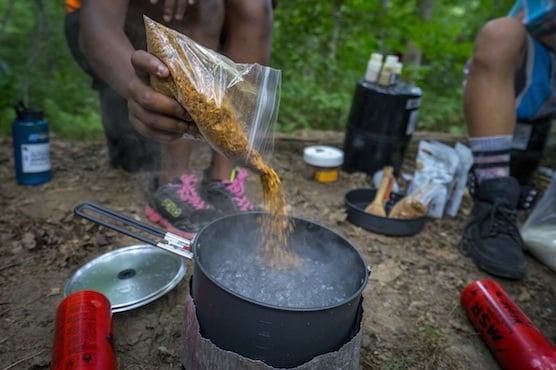
Aha! There it is. The jet sound that is the sign of a happy working stove! Smiles are exchanged among the fledgling backcountry cooks because they know they prevented a potential disappointing dinner experience.
Every new generation of leaders needs to acquire the skills necessary for problem solving and they need to practice those skills. They must develop a (more…)
Stay Sharp In The Offseason By Following the Way of the Farmer
Wilderness Cooking“Did you ever consider thinking like farmers think,” asked my wife, Christine, over breakfast the other morning. And by “you,” she meant guides, outdoor/adventure educators and those folks who love to explore the outdoors.
I answered her question with a shoulder shrug and a grunt, which meant I didn’t understand the query.
So Christine patiently explained. “When you see a farm in the winter it may look as if nothing’s happening. The fields look bare and quiet. Tractors and trucks aren’t out in the fields working. However, the farm still has work to do. The job of the farmer is to repair equipment, sharpen tools as well as skills and to make sure that come the first day of planting everything is powered up, runs well and doesn’t get in the way of important work getting done.”
“Oh, I get it! We shouldn’t just box up our gear in the off season and forget about it until we want to go on a trip or work. We should be spending the “off season” repairing, understanding and building our skills so nothing gets in the way of fun and important work.”
She has a good point.
So let’s look at some of the skills we can work on enhancing during those days when we can’t get out. The benefit of working on these skills is becoming a better outdoors person by being prepared to deal with issues in the backcountry. And doing this with friends and family creates the feeling you are in the backcountry if you use your imagination.
Let’s start with (more…)
The Pan That Started A Backcountry Cooking Revolution
Wilderness CookingThey say man only needs two tools in life: WD-40 to make things go, and duct tape to make things stop. To that short list, we’d like to add the Banks Fry-Bake Pan — a truly lightweight frying pan that’s perfect for cooking — and baking — in the backcounry. Fact is we take at least one of these backcountry gastronomic gadgets along on every single one of our courses here at The National Center for Outdoor & Adventure Education. Next to a map and maybe a compass, it’s the most important tool we carry with us.
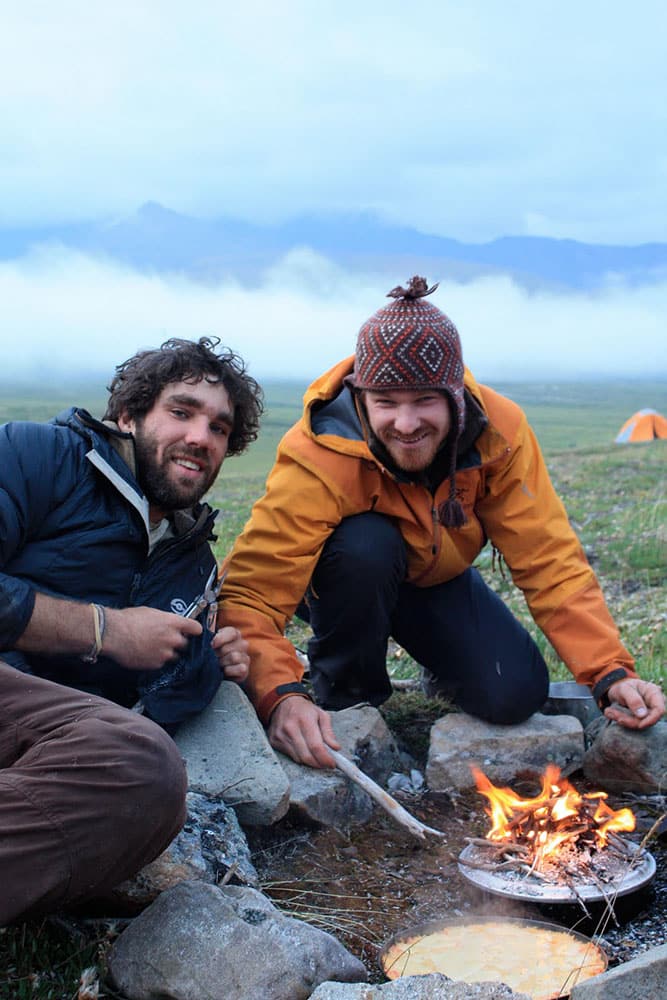
(Photo courtesy of Banks Fry-Bake Co. Used with permission.)
Keep in mind that we aren’t getting paid a cent for praising this product. Why then are we choosing to devote an entire blog post to it? First off, we’re doing it because we can. You know — freedom of speech and all that. But the real reason is to let our outdoor wilderness course participants — as well as outdoor and wilderness educators across the globe — know that backpacking and outdoor exploration is often a game of weights and convenience. And we can’t think of many things that are as light or as easy to use than Banks’ durable cooking pans.
But here’s what really sold us at NCOAE on the concept of carrying these pans everywhere we trek, hike, raft, climb and camp: Along with our friends over at the National Outdoor Leadership School and Outward Bound, our founders and staff have been using Banks Fry-Bake pans for decades, never once disappointed by their durability and function.
There’s just something about eating in the outdoors that makes the experience almost surreal to the palate. Think about it. Where else but in the wilderness does a big can of stew taste like something from a five-star restaurant? Nowhere else, that’s where!
And with Banks Fry-Bake pans, outdoor enthusiasts and cooks alike can fry freshly caught fish, steam up a pot of veggies, stir-fry chicken, and sauté nearly anything else. You can even bake a cake, should you have a birthday boy or girl on your excursion. Talk about versatile; see the recipe for carrot cake at the end of today’s post!
What these lightweight pans do is take the place of those heavy cast-iron Dutch ovens that used to take up half the room in your (more…)
Adventures in Outdoor Cooking: Do it for Your Taste Buds
Wilderness CookingThe instructor-in-training for the day reaches into her pack, shakes her head and swears softly.
“We left a bottle of fuel at basecamp. Who do we call for resupply?”
Liz, NCOAE’s course director walks over to the instructor and looks into the canvas bag. Then she shrugs her shoulders and says, “There’s no one to call. Looks like we’ve only got fuel for three out of eight nights.”
Scanning the forest, Liz points to a pile of rocks on the ground where previous groups have built fires and says, “Collect wood, build a fire, cook dinner.”
A few days earlier, this same group was packing for an Instructor Training Course. Participants are educators who have been in the outdoor education and adventure industry for a few years and have a firm grasp on technical skills. We use the course to familiarize these future instructors with our curriculum, educational practices and other components that are unique to NCOAE.
So, when an Instructor Course group forgets to pack an important piece of gear — in this case fuel — we like to see how problem solving, creativity and ingenuity unfold to keep an expedition moving forward.
Now, with a fire started and a meal selected for the evening, it’s time to start cooking. These NCOAE instructors in training begin by building a potholder out of rocks, stirring up the coals, and blending ingredients together for the meal.
There’s little confusion, no drama, and the meal comes together because these educators have been practicing outdoor skills at home in their backyards as well as in outdoor settings like the one mentioned here.
Practice makes perfect
The way these participants upped their backcountry skills and calmly slapped together a great evening meal was to practice their “seeking game.”
It was back in the late 1990s when a neurologist named Jaak Panksepp coined the term “seeking system” in regard to (more…)
TALK TO US
Have any further questions about our courses, what you’ll learn, or what else to expect? Contact us, we’re here to help!
